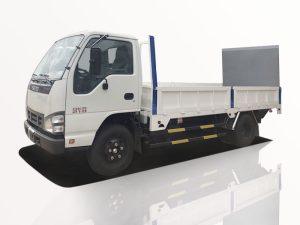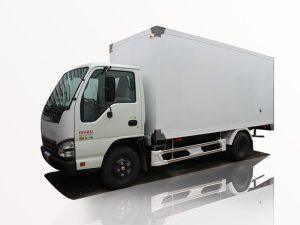Monday to Saturday - 8:00 -17:30
How Many Miles Can You Cover: A Comprehensive Guide
Introduction
When it comes to planning a trip, understanding distances is crucial. Whether you’re exploring your local area, embarking on a road trip, training for a marathon, or considering the capabilities of your vehicle, knowing how many miles you can cover can help you make informed decisions. This guide delves into various contexts—walking, running, biking, driving, and even outdoor adventures—providing an in-depth look at how many miles you can realistically travel in each scenario.
Understanding Mileage: Key Concepts
The Importance of Mileage in Travel
Mileage not only helps in estimating travel time but also aids in budgeting fuel costs and planning rest breaks. Understanding how mileage works can make your trip smoother and more enjoyable.
Factors Influencing Mileage
Several factors can influence how many miles you can cover:
- Type of Activity: Walking, running, biking, and driving all have different average speeds.
- Terrain: Flat surfaces vs. hilly terrains can greatly affect how far you can go.
- Weather Conditions: Rain, snow, or strong winds can slow you down.
- Your Fitness Level: Individual endurance can significantly impact distance covered.
Walking: How Many Miles Can You Walk in a Day?
Average Walking Speed
The average walking speed for most adults ranges from 3 to 4 miles per hour. Here’s how many miles a person can cover based on walking duration:
| Duration (Hours) | Distance (Miles) |
|---|---|
| 1 | 3 – 4 |
| 3 | 9 – 12 |
| 5 | 15 – 20 |
Practical Tips for Walking Longer Distances
To maximize your walking distance, consider the following tips:
- Choose comfortable footwear.
- Stay hydrated.
- Take regular breaks to rest and refuel.
Running: Distances for Runners
Typical Running Distances
Runners can typically cover 4 to 6 miles per hour. Here’s a breakdown:
| Duration (Minutes) | Distance (Miles) |
|---|---|
| 30 | 2 – 3 |
| 60 | 4 – 6 |
| 90 | 6 – 9 |
How to Train for Longer Distances
For those aiming to increase their running distance:
- Incorporate interval training.
- Gradually increase your mileage each week.
- Invest in quality running shoes.
Biking: Covering Miles on Two Wheels
Average Biking Speeds
An average cyclist can travel between 10 to 15 miles per hour. Consider the approximation below:
| Duration (Hours) | Distance (Miles) |
|---|---|
| 1 | 10 – 15 |
| 3 | 30 – 45 |
| 5 | 50 – 75 |
Tips for Efficient Biking
To enhance your biking experience and cover more miles:
- Maintain your bike regularly.
- Plan a route with minimal hills.
- Dress appropriately for the weather.
Driving: Estimating Travel Miles
Driving Speed and Mileage
The average driving speed on highways is about 60 to 75 miles per hour. Here’s what you can expect to cover:
| Duration (Hours) | Distance (Miles) |
|---|---|
| 1 | 60 – 75 |
| 3 | 180 – 225 |
| 5 | 300 – 375 |
Practical Driving Tips
When planning a trip by car, try these tips to maximize mileage:
- Use cruise control on highways to save fuel.
- Plan your route to avoid traffic congestion.
- Regularly check tire pressure for optimal performance.
Exploring Outdoors: Hiking and Camping
Typical Hiking Distances
The average hiking speed is generally around 2 to 3 miles per hour, depending on terrain. Here’s how it breaks down:
| Duration (Hours) | Distance (Miles) |
|---|---|
| 1 | 2 – 3 |
| 3 | 6 – 9 |
| 5 | 10 – 15 |
Hiking Tips and Tricks
To enhance your hiking experience and cover more miles, consider the following:
- Wear appropriate hiking shoes and gear.
- Pack essential supplies wisely.
- Consider using trekking poles for stability.
Different Modes of Transportation: An Overview
Public Transportation
Using buses or trains can vary in distance covered but typically ranges from 30 to 60 miles per hour, depending on the service. Factors such as stops and scheduled routes must be considered. For instance:
| Service Type | Average Speed (Miles/Hour) |
|---|---|
| Buses | 30 – 60 |
| Trains | 50 – 100 |
Air Travel
For air travel, the average commercial flight travels approximately 500 miles per hour! Here’s how quickly you could cover distance:
| Flight Duration (Hours) | Distance (Miles) |
|---|---|
| 1 | 500 |
| 3 | 1500 |
Factors Impacting Your Travel Plans
Personal Fitness Level
Your individual fitness level plays a crucial role in determining how many miles you can cover, whether walking, running, or hiking.
Travel Purpose
Understanding the reason for your journey can help you decide on the best mode of transportation and how long you should expect to travel.
FAQs
How many miles can I walk in a week?
The average healthy adult can walk between 15 to 30 miles a week, depending on their fitness level and schedule.
What’s the average distance for a marathon?
A marathon is a standardized distance of 26.2 miles.
How many miles can I bike in a day?
If you’re a recreational cyclist, you can typically bike between 30 to 60 miles in a day, depending on fitness and terrain.
How fast can I drive across the country?
Driving across the United States typically ranges from 2,000 to 3,000 miles. With proper planning and minimal stops, it can take around 30 to 40 hours of driving time, stretching over 3 to 4 days.
How far can I run in a week?
Beginner runners often cover between 10 to 20 miles weekly, while experienced runners might manage 30 to 70 miles.
What’s the longest hike I can do in one day?
Experienced hikers can cover 20 to 30 miles in a single day on flat terrain, but it’s essential to consider personal limits and safety.









